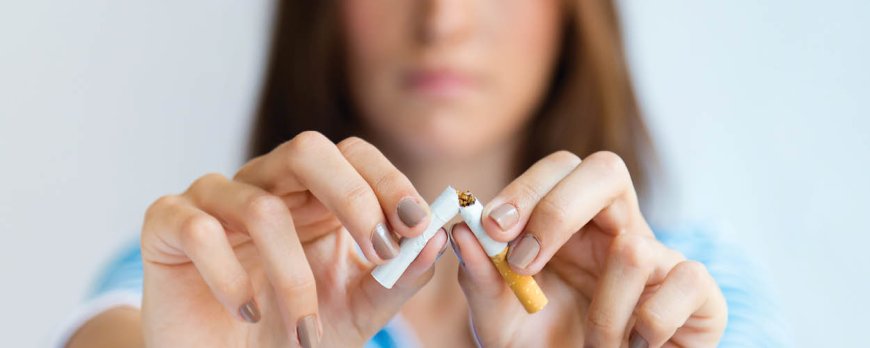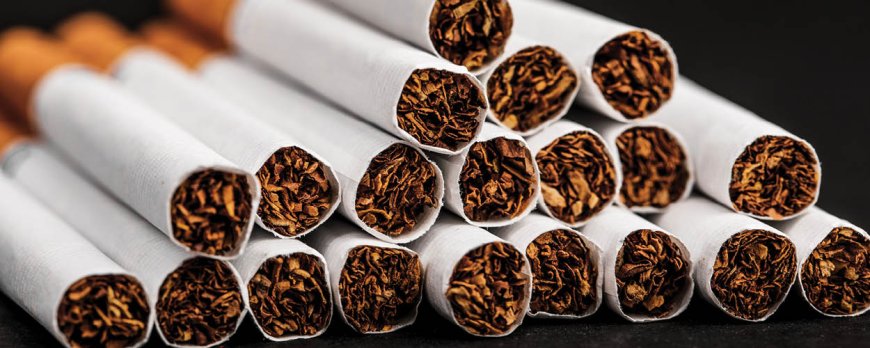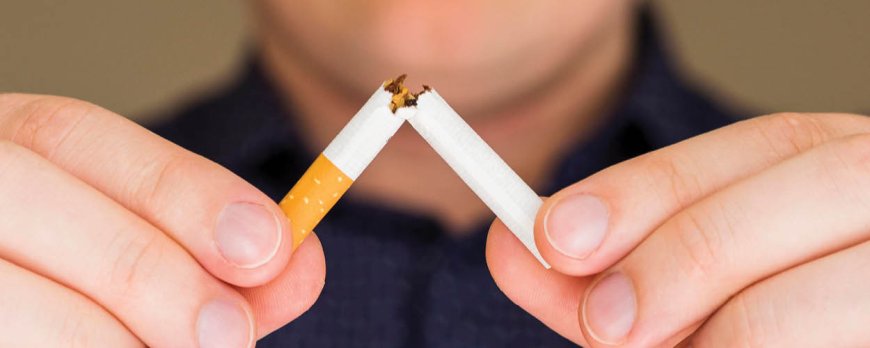What foods help with nicotine cravings?
Discover 'What foods help with nicotine cravings?' in our latest article, providing nutritional tips to aid your journey to a smoke-free lifestyle.

What foods help with nicotine cravings?
Quitting smoking can be challenging, but incorporating certain foods into your diet can help reduce nicotine cravings and support your journey to a smoke-free lifestyle. Certain foods have been found to have beneficial effects on managing cravings and aiding in the process of quitting smoking. Understanding the role of nutrition in combating nicotine cravings is essential for those looking to break free from their smoking habit. In this article, we will explore the foods that can help reduce nicotine cravings and provide natural remedies for managing this challenge.
Key Takeaways:
- Milk can make cigarettes taste worse, making it a good substitute during cravings.
- Fruits and vegetables, such as raw carrots or crunchy snacks, can keep the mouth busy and reduce the psychological need to smoke.
- Recommended snacks for quitting smoking include popcorn, sunflower seeds, sugarless gum, and hard candy.
- Avoid consuming trigger foods and drinks like coffee, alcohol, spicy foods, and sugary foods, as they can enhance the taste of cigarettes and trigger cravings.
- Incorporating foods like cinnamon sticks, fiber-rich beans, and favorite foods in moderation can also help with reducing cravings and maintaining a healthy weight.

Understanding nicotine cravings
Nicotine cravings can be intense for those trying to quit smoking, but by understanding their triggers and finding suitable substitutes, it is possible to overcome them. It is important to note that cravings for nicotine occur due to the addictive nature of the substance and the habitual association of smoking with certain activities or emotions.
During the process of quitting smoking, it is essential to replace the act of smoking with healthier alternatives. By doing so, individuals can gradually retrain their brains and reduce the intensity of cravings. Understanding the underlying reasons for these cravings and finding suitable substitutes can greatly aid in the journey towards a smoke-free life.
Identifying triggers
One of the first steps in managing nicotine cravings is identifying the triggers that make you crave a cigarette. This could be certain activities, environments, or emotional states. By recognizing these triggers, you can develop strategies to avoid or modify them, making it easier to resist cravings.
Here are some common triggers to be aware of:
- Stressful situations
- Socializing with smokers
- Drinking alcohol or coffee
- Experiencing boredom or restlessness
By understanding your personal triggers, you can plan ahead and implement healthier coping mechanisms to combat cravings. This could involve engaging in physical activity, practicing relaxation techniques, or distracting yourself with enjoyable activities.
Finding suitable substitutes
When nicotine cravings strike, having suitable substitutes can make a significant difference in managing the urge to smoke. Healthy foods can help distract the mind, provide oral satisfaction, and even reduce the taste of cigarettes.
Here are some of the best foods to combat nicotine addiction:
- Milk: Incorporating milk into your diet can make cigarettes taste worse, acting as a good substitute during cravings.
- Fruits and vegetables: Raw carrots, crunchy snacks, and other fruits and vegetables can help keep the mouth busy and reduce the psychological need to smoke.
- Snacks: Popcorn, sunflower seeds, sugarless gum, and hard candy can provide a satisfying oral sensation and help manage cravings.
It is important to avoid trigger foods and drinks that enhance the taste of cigarettes and trigger cravings. Foods like coffee, alcohol, spicy foods, and sugary foods are best to be avoided while trying to quit smoking. Instead, opt for alternatives like cinnamon sticks and fiber-rich beans to help reduce cravings.
By understanding nicotine cravings, identifying triggers, and finding suitable substitutes, individuals can effectively manage their cravings and increase their chances of succeeding in their journey to quit smoking. Remember, it is always beneficial to seek support from healthcare professionals, support groups, and loved ones during this challenging but rewarding process.

The role of milk in reducing cravings
Milk has been found to make cigarettes taste worse, making it an effective alternative during cravings and reducing the desire to smoke. Incorporating milk into your diet can help manage nicotine cravings and support your efforts to quit smoking. Here are some reasons why milk can be beneficial for reducing cravings:
- Milk provides a creamy and satisfying texture that can help mimic the sensation of smoking. The act of drinking milk and the feeling of fullness it offers can help distract from the urge to smoke.
- The calcium content in milk can help reduce the addictive effects of nicotine on the brain. Research suggests that calcium can regulate certain brain receptors linked to nicotine addiction, potentially making it easier to overcome cravings.
- Milk is a healthy and nutritious beverage choice. It contains essential nutrients like protein, vitamins, and minerals that can support overall well-being as you navigate the challenges of quitting smoking.
When cravings strike, reach for a glass of milk as a healthier alternative to cigarettes. Remember to choose low-fat or skim milk options to minimize calorie intake. Incorporating milk into your daily routine alongside other healthy habits can increase your chances of successfully quitting smoking and maintaining a smoke-free lifestyle.
Fruits and vegetables for distraction and satisfaction
Snacking on fruits and vegetables, such as raw carrots or crunchy snacks, can help distract from nicotine cravings and provide a healthier alternative. When cravings strike, reaching for a piece of fruit or a vegetable can keep the mouth busy and satisfy the psychological need to smoke. The act of chewing and the crunchy texture of these foods can provide a satisfying oral sensation, helping to manage cravings effectively.
Incorporating fruits and vegetables into the diet not only helps with distracting from nicotine cravings but also provides essential nutrients for overall health. These foods are low in calories and high in vitamins, minerals, and fiber, making them an excellent choice for those looking to quit smoking and maintain a healthy weight. Opting for options like apples, celery sticks, or bell pepper slices can provide a refreshing and nutritious snack that satisfies cravings without the negative effects of smoking.
- Apples: Apples are a great source of natural sweetness and fiber. They can help satisfy a sweet tooth while keeping you fuller for longer.
- Celery sticks: Celery is low in calories but high in fiber, giving you a satisfying crunch without compromising your health goals.
- Bell pepper slices: Bell peppers are not only colorful and crunchy but also loaded with antioxidants and vitamins.
By incorporating more fruits and vegetables into your diet, you can not only distract yourself from nicotine cravings but also improve your overall health and well-being. Remember to choose a variety of colors to ensure you're getting a wide range of nutrients. With these healthy options, you can stay on track with your smoke-free journey while enjoying delicious and nutritious snacks.

Recommended snacks for quitting smoking
When trying to quit smoking, snacks like popcorn, sunflower seeds, sugarless gum, and hard candy can serve as effective appetite suppressants and aid in managing nicotine withdrawal symptoms. These snacks provide a satisfying oral sensation and help distract from cravings for cigarettes. Here are some options to consider:
- Popcorn: Air-popped popcorn is a low-calorie and high-fiber snack that can help keep your mouth busy. It provides a satisfying crunch while being a healthier alternative to chips or other high-fat snacks.
- Sunflower seeds: Sunflower seeds are another great snack to keep your hands and mouth occupied. They require effort to crack open, making them a good distraction during cravings. Plus, they are a good source of healthy fats and protein.
- Sugarless gum: Chewing sugarless gum can help satisfy the oral fixation that comes with smoking. It can also help suppress appetite and freshen your breath. Look for gum with natural flavors and avoid those with artificial sweeteners.
- Hard candy: Sugar-free hard candy can provide a long-lasting sensation in the mouth, helping to curb cravings. Opt for options without added sugars or artificial sweeteners for a healthier alternative.
Remember to choose snacks that align with your dietary needs and preferences. These options can serve as substitutes for cigarettes during moments of craving, helping you stay on track with your smoke-free journey.
H3: Other helpful options:
- Rice cakes: Rice cakes are low in calories and provide a crunchy texture that can help satisfy the need for something to munch on. They come in various flavors and can be a healthier alternative to chips or crackers.
- Celery sticks with peanut butter: Celery sticks paired with a small amount of peanut butter can offer a satisfying combination of crunch and creaminess. This snack provides fiber, protein, and healthy fats, making it a nutritious choice.
- Carrot sticks: Raw carrot sticks are not only low in calories but also provide a good crunch. They can be enjoyed on their own or paired with a dip such as hummus or Greek yogurt for added flavor.
Experiment with different snacks to find what works best for you. These alternatives can help manage cravings and keep you on the path to a healthier, smoke-free lifestyle.
Avoiding trigger foods and drinks
It is best to avoid coffee, alcohol, spicy foods, and sugary foods while attempting to quit smoking, as they can intensify the taste of cigarettes and increase cravings. These substances can trigger associations in the brain that make the desire to smoke even stronger. Coffee, for example, is often paired with cigarettes, and the combination of the two can be a powerful trigger for cravings. Similarly, alcohol can lower inhibitions and make it more challenging to resist the urge to smoke. Spicy foods and sugary foods have been found to enhance the taste of cigarettes, making them harder to resist during cravings.
Instead, opt for healthier alternatives that can help manage cravings and support your efforts to quit smoking. Drinking herbal tea or water instead of coffee can help satisfy the need for a hot beverage without the association with cigarettes. Consider swapping alcoholic drinks for mocktails or other non-alcoholic beverages to avoid triggers. When it comes to food, choose milder options that don't have a strong taste or stimulate the same cravings as cigarettes. Opt for snacks like fruits or nuts, which can provide a satisfying crunch and contribute to a balanced diet.
Avoiding trigger foods and drinks:
- Avoid coffee, as it can intensify the taste of cigarettes
- Refrain from consuming alcohol, as it can lower inhibitions and increase cravings
- Avoid spicy foods, as they can enhance the taste of cigarettes
- Avoid sugary foods, as they can trigger cravings
By being mindful of the foods and drinks you consume while attempting to quit smoking, you can better manage cravings and increase your chances of successfully quitting. Remember, staying committed to a smoke-free lifestyle requires making healthy choices and seeking support to overcome cravings.
Additional foods to help with cravings
In addition to the aforementioned foods, incorporating cinnamon sticks, fiber-rich beans, and enjoying favorite foods in moderation can further assist in reducing nicotine cravings. Cinnamon sticks are a flavorful and aromatic option that can help curb cravings. Simply chewing on a cinnamon stick can provide a satisfying sensation and help distract from the desire to smoke. Adding cinnamon to foods and beverages can also contribute to reducing cravings.
Fiber-rich beans are another excellent choice for managing nicotine cravings. Beans are not only high in fiber, which can help promote a feeling of fullness, but they also provide a good source of protein. This combination can help stabilize blood sugar levels and keep cravings at bay. Incorporate beans into meals or snacks, such as in soups, salads, or as a nutritious side dish, to help satisfy cravings and maintain a healthy diet.
Enjoying favorite foods in moderation
It is important to remember that quitting smoking does not mean depriving yourself. Enjoying favorite foods in moderation can provide a sense of comfort and pleasure, which can help reduce cravings. By allowing yourself occasional indulgences, you can maintain a positive mindset and stay motivated on your smoke-free journey.
However, it is crucial to strike a balance and not rely solely on unhealthy foods. Incorporating a variety of nutritious options, like the ones mentioned before, into your diet alongside favorite treats can help with managing cravings and maintaining overall well-being.
The importance of nutrition during withdrawal
Proper nutrition plays a crucial role in controlling nicotine withdrawal symptoms and ensuring overall well-being during the quitting process. When individuals decide to quit smoking, their bodies go through various physical and emotional changes. Nutritional support can help minimize these symptoms and make the transition to a smoke-free lifestyle more manageable.
During nicotine withdrawal, some common symptoms include irritability, anxiety, and cravings. By consuming a balanced diet, individuals can help stabilize their mood and alleviate these symptoms. Eating regular meals that include a combination of carbohydrates, proteins, and fats can provide a steady release of energy and keep blood sugar levels stable.
H3: Essential nutrients for managing withdrawal
- Protein: Incorporating lean protein sources like poultry, fish, tofu, or legumes can help boost serotonin levels, which can improve mood and reduce anxiety.
- Complex carbohydrates: Foods like whole grains, beans, and vegetables provide a steady release of energy and can help reduce cravings for cigarettes.
- Healthy fats: Nuts, seeds, avocados, and olive oil are excellent sources of healthy fats that can support brain health and help manage cravings.
- Vitamins and minerals: Eating a variety of fruits and vegetables can provide essential vitamins and minerals that support the body's natural detoxification processes and boost the immune system.
- Hydration: Staying adequately hydrated is essential for overall health and can help alleviate some withdrawal symptoms. Drinking water throughout the day can also help manage cravings.
By focusing on a nutrient-rich diet, individuals can not only reduce nicotine withdrawal symptoms but also improve their overall health. It is important to consult with a healthcare professional or a registered dietitian to develop a personalized meal plan that suits individual needs and supports their journey towards a smoke-free life.

Managing cravings and maintaining a healthy weight
By incorporating foods that help with nicotine cravings into your diet, you can not only manage cravings effectively but also maintain a healthy weight during the process of quitting smoking. Making mindful dietary choices can support both your physical and mental well-being as you strive to overcome tobacco cravings. Here are some dietary tips to help you manage tobacco cravings:
1. Focus on fruits and vegetables
Include a variety of fruits and vegetables in your meals and snacks. Not only are they packed with essential nutrients, but their natural sweetness can help satisfy cravings for sugary or high-calorie foods. Opt for crunchy snacks like raw carrots or celery sticks, which can provide a satisfying oral sensation and keep your mouth busy.
2. Choose whole grains and lean proteins
Incorporate whole grains like quinoa, brown rice, and whole wheat bread into your meals. These complex carbohydrates can provide a steady release of energy and help keep you feeling fuller for longer. Additionally, lean proteins such as chicken, fish, tofu, and beans can help stabilize blood sugar levels and promote satiety.
3. Stay hydrated
Drinking an adequate amount of water throughout the day can help curb cravings and maintain overall health. Sometimes, feelings of hunger can actually be mistaken for thirst. Keep a water bottle handy and aim to drink at least eight glasses of water daily.
Remember, managing tobacco cravings is not just about what you eat but also about adopting a holistic approach. Engage in regular physical activity, get enough sleep, and seek support from friends, family, or support groups. With the right mindset and a well-balanced diet, you can successfully navigate the challenges of quitting smoking while maintaining a healthy weight.
Staying committed to a smoke-free lifestyle
Quitting smoking is a journey, and staying committed to a smoke-free lifestyle involves making healthy food choices and seeking support during challenging moments. Incorporating certain foods into your diet can help reduce nicotine cravings and increase your chances of successfully quitting smoking.
Here are some foods that can aid in managing cravings and maintaining a healthy weight:
- Milk: This dairy beverage has been found to make cigarettes taste worse, making it a good substitute during a craving. Whether you prefer a glass of cold milk or a warm cup of milk with cinnamon, incorporating this into your routine can help reduce the urge to smoke.
- Fruits and vegetables: Snacking on raw carrots, crunchy snacks, or other fruits and vegetables can help keep your mouth busy and satisfy the psychological need to smoke. Plus, they provide essential nutrients to support your overall health.
- Snacks: When cravings strike, having healthy snacks on hand can be a lifesaver. Popcorn, sunflower seeds, sugarless gum, and hard candy can provide a satisfying oral sensation and help manage cravings without adding unnecessary calories.
- Avoid trigger foods: Certain foods and drinks, such as coffee, alcohol, spicy foods, and sugary foods, can enhance the taste of cigarettes and trigger cravings. It's best to avoid these while trying to quit smoking to minimize the risk of relapse.
Remember, incorporating these foods into your diet is just one aspect of staying committed to a smoke-free lifestyle. It's also important to seek support from friends, family, or a support group to help you navigate through challenging moments. Quitting smoking is a significant achievement, and with the right tools and strategies, you can succeed in living a smoke-free life.
Conclusion
In conclusion, incorporating foods that help with nicotine cravings into your diet can significantly support your journey to a smoke-free lifestyle and help you manage withdrawal symptoms effectively.
Certain foods, like milk, can make cigarettes taste worse, making it a good substitute during cravings. Fruits and vegetables, such as raw carrots or crunchy snacks, can keep the mouth busy and reduce the psychological need to smoke. Snacks like popcorn, sunflower seeds, sugarless gum, and hard candy are also recommended options for quitting smoking.
On the other hand, it is important to avoid foods and drinks that enhance the taste of cigarettes and trigger cravings, such as coffee, alcohol, spicy foods, and sugary foods. Instead, consider incorporating foods like cinnamon sticks, fiber-rich beans, and your favorite foods in moderation to aid in managing cravings and maintaining a healthy weight.
By focusing on nutrition and making conscious dietary choices, you can not only combat nicotine cravings but also stay committed to a smoke-free lifestyle. Remember to seek support and stay motivated to overcome cravings and successfully quit smoking.
FAQ
What foods help with nicotine cravings?
Certain foods can help reduce nicotine cravings. Milk can make cigarettes taste worse, making it a good substitute for a cigarette during a craving. Fruits and vegetables, such as raw carrots or crunchy snacks, can help keep the mouth busy and reduce the psychological need to smoke. Popcorn, sunflower seeds, sugarless gum, and hard candy are also recommended snacks for quitting smoking.
Which foods should I avoid while trying to quit smoking?
It is best to avoid consuming foods and drinks like coffee, alcohol, spicy foods, and sugary foods while trying to quit smoking. These can enhance the taste of cigarettes and trigger cravings.
Are there any other foods that can help with cravings?
Yes, cinnamon sticks, beans high in fiber, and favorite foods in moderation can also help with reducing cravings for nicotine.
How can proper nutrition help during nicotine withdrawal?
Proper nutrition during nicotine withdrawal can help manage withdrawal symptoms and maintain overall health.
Can incorporating foods that reduce cravings help with maintaining a healthy weight?
Yes, incorporating foods that help with nicotine cravings can also aid in maintaining a healthy weight. It is important to make healthy food choices while managing cravings.
How can I stay committed to a smoke-free lifestyle?
Staying committed to a smoke-free lifestyle can be achieved by making healthy food choices, seeking support to overcome cravings, and staying motivated to quit smoking.


































































































































